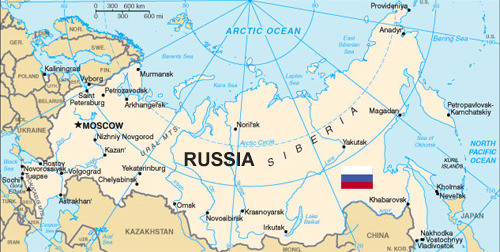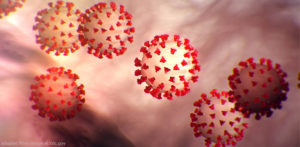COVID-19 Siberia Update: Life in the Village

Subject: COVID-19 Siberia Update: Life in the Village
Date: Thu, 9 Apr 2020
From: Sarah Lindemann-Komarova <echosiberia@gmail.com>
COVID-19 Siberia Update: Life in the Village:
Part I: Background
By Sarah Lindemann-Komarova
[Sarah Lindemann-Komarova has been a community development activist in Siberia since 1992. Currently she is focusing on research and writing about civil society in Russia.]
With Pictures: medium.com/@ECHOSiberia/covid-19-siberia-update-life-in-the-village-a3a964a5290a [DJ: Great photos!]
 This is the first in a three-part update on “COVID-19: The View from Siberia”. Part One is a general update of the situation in Novosibirsk and an introduction to the Village of Manzherok in the Altai Republic. Parts Two and Three will cover official Russian Federation “Non-Work” Weeks One and Two as they evolved in the Village.
This is the first in a three-part update on “COVID-19: The View from Siberia”. Part One is a general update of the situation in Novosibirsk and an introduction to the Village of Manzherok in the Altai Republic. Parts Two and Three will cover official Russian Federation “Non-Work” Weeks One and Two as they evolved in the Village.
When my last reported ended on March 18 [DJ: See below], the first official case of COVID-19 had just been registered in Novosibirsk, the third largest city in Russia. Since then, medical masks appeared on a life size sculpture of 90’s Akademgorodok rock hero Mikhail Zuev and the larger than life mouse sculpture honoring all mice who died for science. After a slow build to 13, the first leap happened today (April 9) with five new cases. Of these 18, 3 had been in Moscow, 3 were in contact with infected relatives, 1 had not left the region or had contact with anyone, 7 had been in European countries, 2 in Thailand, 1 in Turkey, and 1 in UAE. Yesterday in Novosibirsk, 4,387 residents were under observation and 5,514 had been removed from observation. 2,359 people are registered as having an acute respiratory virus infection or the flu, 33 of them are in the hospital. All of these numbers are increases over the day before. Anyone who is concerned about under-reporting and the possible true dimensions of the virus in Novosibirsk, should take the second set of numbers into account.
Overall, in the 13 “classic” Siberian regions (from Tyumen to Zabaikalsk) there are 201 confirmed cases. Only three of them did not register increases today. There have been three deaths. Tracking Siberian cases is now easy through a resource created by the Novosibirsk based digital map and guide making company 2GIS (https://covid.2gis.ru/). Yandex, Russian search and Internet services company, has created a more comprehensive resource showing not only the number, but the level of self-isolation in each region (https://yandex.ru/maps/covid19/isolation?ll=41.775580%2C54.894027&z=3). The indicator is based on number of people on the streets. Yesterday there was a noticeable difference in attitudes going West to East in terms of self-isolation. The high mark green dot max 5’s that were consistent throughout Western Russia evolved into 4.8s and 4.5s when you hit the Urals. Eastern most Tyumen was the only “green” Siberian region at 4.1. From there the color palate shifted down from a greenish mustard to shades of orange for the rest of Siberia with dots from 3.8-3.0. In an ominous sign as infection numbers go up, the self-isolation numbers are going down. Today, the West turned orange and three Siberian regions (including Novosibirsk) moved into the reddish self-isolating zone in the 2.7-2.8 range.
Missing from the map is the Altai Republic, one of only 3 out of 85 Russians regions without an officially registered case. That does not mean the Republic hasn’t been significantly impacted. How the COVID-19 pandemic is hitting this region is the focus of this report. More specifically, the village of Manzherok, 450 km (6 hour drive) South of Novosibirsk. The Altai Republic is on the Southern Siberian border with Mongolia, Kazakhstan and China. It is one of the poorest regions in the country with a population of just slightly north of 200,000, only 35% of them Altai. It is also one of the most beautiful regions referred to by some as the Switzerland of Russia while others consider it the gateway to the Buddist/Hindu spiritual kingdom Shambhala. Manzherok is a Russian village in the less rural, northern part of the Republic and has 1,700 year round residents. Today, most are native or longtime residents. However, over the last 20 years they have been joined by retirees mostly from the North, like former An27 pilot Nikolay, and a smattering of “vacation home” people, like me.
When we bought land on the banks of the Katun River in 2001, the Village was at the bottom of the post- Soviet descent into poverty. Only abandoned buildings remained of the furniture factory that once supported most of the villagers. No one had running water in their homes. It was immortalized by a pop song honoring the 1966 Festival of Soviet-Mongol Friendship that took place here (“Friendship is Manzherok”) and as the location of the 1965 film “Your Son and Brother” by Director/ Writer Vasily Shukshin.
Today tourism is the primary industry with many villagers building cabins for visitors as part of the “green tourism” movement. Several full-time newcomers built small hotels on our residentially zoned street and one hotel that expands every year at the end of the street is owned and run by non-residents. Tourism got a steroid injection when the Russian government decided to fund the infrastructure necessary to support its development. This included expanding the airport to accommodate Airbus jets and a four-lane highway that appeared kilometer by kilometer blasting through hills and homes on its way towards us. In the pre-crash late 2000’s, they also provided support to a private corporation to create a ski resort. Subsequently, millions of dollars disappeared without so much as a ski lift to show for it until 2011 when, it is alleged, Putin asked Sberbank to step in. Now, there are European gondolas, quaint, clean white kiosks, and numerous fast food joints. Before the virus, Sberbank announced that by the end of 2020 their investment would be up to $30,000,000.
Sberbank CEO German Gref came for the official opening of the new, year round gondolas. His speech included a clear indication why the Altaigate, scandal ridden, stayed way too long previous Governor Alexander Berdnikov, was replaced by Oleg Khorokhordin last March and voted in this September. “”Money was stolen by the previous team (the governor of the Altai Republic). We analyzed how money was spent… We did not find most of the money for the construction of a snowmaking system and a lake cleaning system. In addition, they (the contractors who performed the work) pulled out mud and algae from the lake and just tossed it to the other end. This clogged the lake’s drainage and now there is an environmental catastrophe. We will do everything to ensure that these people are held accountable.” An article covering a similar speech at the “Russian Investment Forum” in Sochi by a Sberbank Deputy Chairman indicated that among those people may be the now ex-Governor’s mother-in-law.
Thus, Khorokhordin already faced considerable challenges, and then came COVID, the make or break for experienced and/or entrenched Governors around the world, the great uniter. Numerous Governors have already submitted their “resignations” to Putin during the pandemic.
In a nod towards post-Soviet de-centralization, regional Governors and their Administrations are officially responsible for defining their COVID responses but they are following Moscow’s lead. Initially Moscow Mayor Sobyanin was setting the path. Now the official Russian face for the pandemic response is Prime Minister Mikhail Mishustin, but Putin remains the codifying force. The cascading effect of this signaling was visible as things out here moved from the mid-March “heightened awareness” status to end of March “self-isolation” and from extended school vacations to distance learning. When Putin announced a national “non-work” week from March 30-April 5, it was left to regional administrations and businesses to figure out what that should look like. Two days later Russian Prime Minister Mikhail Mishustin stepped in to not only define “non-work” for the Altai Republic, but extend it by “recommending” that regional officials close down hotels, bed and breakfasts, and other recreational facilities along with restaurants, street souvenir and food markets from Saturday March 28 until June 1. Thus, the lucrative May holidays were gutted from the already very short income generating calendar that so many people in the Republic depend on. The implications of this were compounded by the results of a survey conducted by a life insurance company and a bank reporting that almost 70% of Siberians do not have any savings.
Khorokhordin’a approach is to be very visible visiting medical facilities and conducting meetings with local leaders and officials to update and organize the next phase of this process as it evolves. The Governor’s updates include information on the number of people returning from abroad and other regions of Russia who are quarantined at home and on raids to insure they are observing the strict guidelines. An additional 1,200 test kits were on their way so he was confident the region is ready to conduct testing as necessary. The Minister of Economics reports carefully monitoring the situation in stores to make sure all essential supplies (food and medicine) are available. A hot-line has been set up to report price gouging and another to provide for the needs of people over 65. Several groups, included United Russia, are working together to develop a COVID volunteer corps.
Shutting down the tourism industry was set to begin Sunday afternoon March 29. Tourists who were scheduled to stay beyond that date could remain but their host institution or family would have to organize isolation for them including room service for all meals. All future bookings must be canceled. There would be regular raids to insure no one was cheating. On March 28, these restrictions were repeated hourly on the radio news as we drove down from Novosibirsk to spend the “non-work” period at our house. There are usually police at the border so we came prepared with documents in case we had to talk our way in but, today there were none. Instead, a message popped up on my cell phone as we passed the border, “Welcome to your home region!, if you are returning from abroad you are required to self-isolate for 14 days”. They provided a link to a site with information on preventing the virus and the coronavirus hot-line number. Heading home we passed two billboards with huge red and pink, spikey balls of virus and again the requirement to self-isolate if you have been abroad.
When we arrived in the late afternoon, the streets were empty, there was no one on the riverbank or in their yards. This was not a quarantine or social distancing, it was a typical spring afternoon in Manzherok. Still too much snow to begin to prepare the garden and too early for the evening stroll around the village. I was at the opposite end of ground zero in Russia for the COVID-19 pandemic.
Part II: “Non-Work Week #1 and the Plus’s to Living in a Village During a 21st Century Pandemic.
